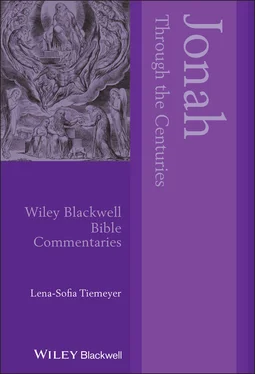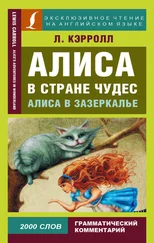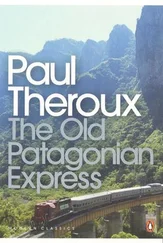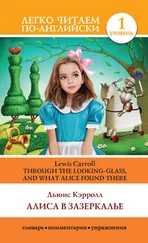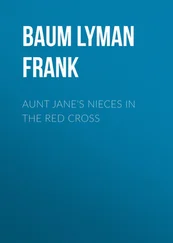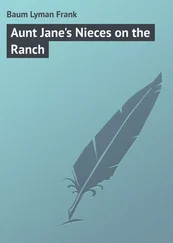Lena-Sofia Tiemeyer - Jonah Through the Centuries
Здесь есть возможность читать онлайн «Lena-Sofia Tiemeyer - Jonah Through the Centuries» — ознакомительный отрывок электронной книги совершенно бесплатно, а после прочтения отрывка купить полную версию. В некоторых случаях можно слушать аудио, скачать через торрент в формате fb2 и присутствует краткое содержание. Жанр: unrecognised, на английском языке. Описание произведения, (предисловие) а так же отзывы посетителей доступны на портале библиотеки ЛибКат.
- Название:Jonah Through the Centuries
- Автор:
- Жанр:
- Год:неизвестен
- ISBN:нет данных
- Рейтинг книги:4 / 5. Голосов: 1
-
Избранное:Добавить в избранное
- Отзывы:
-
Ваша оценка:
- 80
- 1
- 2
- 3
- 4
- 5
Jonah Through the Centuries: краткое содержание, описание и аннотация
Предлагаем к чтению аннотацию, описание, краткое содержание или предисловие (зависит от того, что написал сам автор книги «Jonah Through the Centuries»). Если вы не нашли необходимую информацию о книге — напишите в комментариях, мы постараемся отыскать её.
Jonah through the Centuries
should
Jonah through the Centuries
Jonah Through the Centuries — читать онлайн ознакомительный отрывок
Ниже представлен текст книги, разбитый по страницам. Система сохранения места последней прочитанной страницы, позволяет с удобством читать онлайн бесплатно книгу «Jonah Through the Centuries», без необходимости каждый раз заново искать на чём Вы остановились. Поставьте закладку, и сможете в любой момент перейти на страницу, на которой закончили чтение.
Интервал:
Закладка:
Beginning with the second and third points, the Church Fathers agree almost unanimously that the three days and the three nights in Jonah 2:1b point to Jesus’s death and resurrection (e.g. Augustine, Cyril of Jerusalem). In parallel, many patristic interpreters stress the distinction between Jonah and Jesus. Cyril of Alexandria highlights that not everything which befell Jonah should be understood as relevant and applicable to the process of seeing Jonah as a type for Christ. Jonah tried to flee from God’s command, unlike Jesus, who did not display any reluctance or lack of enthusiasm for his ministry, nor did he flee from the face of God. Furthermore, while Jonah was disappointed in God’s compassion, Jesus was not disappointed to see the nations saved. Thus, inherent in many of the typological interpretations is a sense that Jonah is an imperfect type or even an ‘anti-type’ of Christ, ultimately to be replaced by the perfect ‘true Jonah’, namely Jesus. This view became prevalent in much Christian writing and often conveyed anti-Jewish replacement theology.
Turning to the first point, many Christian exegetes (e.g. Jerome) treat the sailors as ‘anti-types’ and compare them to the Jews at the time of Jesus, to the detriment of the latter. Whereas the sailors hesitated to throw Jonah into the sea, the Jews at the time of Jesus shouted for Jesus’s crucifixion. Turning to the ‘types’, a significantly smaller group of Christian retellings, yet equally anti-Jewish in their outlook, depicts the sailors as brutal Jewish men ready and willing to kill Jonah.
In addition to these three main typological readings, many interpreters maintain the virtue of the people of Nineveh. Despite the brevity of Jonah’s message, they turned to the God of Israel in penitence. Many Christian exegetes use the Ninevites’ repentance to highlight the perceived failure of the Jews to accept Jesus as their Messiah (e.g. Jerome, Justin Martyr, Cyril of Alexandria, Ephrem the Syrian). This type of anti-Jewish comparison remains prevalent among the reformers. In his German commentary to Jonah, Luther lauds Nineveh’s behaviour, comparing it with that of the centurion in Matt 8:10, while lamenting Jerusalem’s rejection of Jesus. It also persists in later protestant sermons on Jonah. The eighteenth-century English congregational minister Thomas Bradbury, for example, contrasts the people of Nineveh with the people of Israel. The former believed Jonah – a mere messenger – and repented of their sins, whereas the latter neither believed nor repented despite hearing God’s own son in the flesh.
Finally, the worm in Jonah 4:7 has been read typologically to foreshadow Jesus’s victory on the cross and the triumph of the Gospel. According to Augustine, followed by Luther, the worm is a type for either Christ or the Gospel, who devours the plant ( kikayyon ), which represents the Old Covenant. Again, this image is strongly anti-Jewish in its insistence that God’s covenant with Israel has been superseded by that with the Christian Church.
Jonah in Christian Art
Jonah is used in a similar typological way in much of Christian art. Such a ‘Jonah cycle’ consists of three main scenes:
1 Jonah is tossed overboard by the sailors and swallowed by the fish.
2 Jonah is vomited out of the fish (Jonah 2:11).
3 Jonah reclines under the kikayyon (Jonah 4:6–7).
The iconography thus concentrates on those elements that convey the central Christian message; these three motifs are selected because they represent key Christian tenets of faith. The tossing of Jonah overboard and his subsequent re-emergence carry the dual function of symbolizing Jesus’s own death and resurrection and, by extension, also Christian baptism whereby a Christian is understood to die and rise with Christ. In contrast, the repentance of the people of Nineveh, such a prominent theme in Christian texts (see above), seldom appears in graphic form. Michelangelo’s depiction of Jonah, in the Sistine chapel, offers a formidable example of Christian Jonah symbolism. The fish represents Jesus’s triumphant resurrection, whereas the plant in the background stands for the cessation of the Old Covenant.
Jewish Responses to Christian Polemic
Due to the prevalent and often very anti-Jewish quality of much Christian interaction with the Book of Jonah, many Jewish interpreters reacted to this polemic. For instance, many Jewish interpreters problematized the typological interpretations of the sailors by turning them into either Jewish converts or persecuting Christians. Likewise, Jewish interpreters responded to the Christian praise of the Ninevites by casting doubts upon the sincerity and longevity of their repentance. This line of exegesis receives support from a comparative reading of Jonah and Nahum, where the latter book describes Nineveh’s historical destruction in 612 bce. It gains further momentum by the references to the fasting animals in Jonah 3:7: according to many rabbis, the Ninevites’ decision to withhold water from innocent animals demonstrated their inherent cruelty (e.g. y.Tan . 2:1).
Islamic Interpretations
Jonah, or Yunus as he is called in Arabic, is remembered in Islamic traditions as a prophet who was faithful to God and delivered his message. He is often also named Dhul-Nun (Arabic: ذو النون, meaning ‘The One of the Whale’) and Sahib al-hut (Arabic: صاحب الحوت, meaning ‘The Man of the Whale’). Most of the material about Jonah in the Qur’an serves to support Muhammad: it provides insight into and a precedent for the initial opposition that Muhammad faced from the people of Mecca.
Jonah appears six times in the Qur’an (Sura 4:163; 6:86; 10:98 [Yunus]; 21:87–88; 37:139–48; 68:48–50). These references are opaque and difficult to forge together into a coherent and cohesive narrative. It is likely that the original readers were familiar with the Book of Jonah, along with the references in the NT, and thus able to interpret the extant elusive Qur’anic references in their light.
As time went by, however, the biblical narrative faded from memory, and the Qur’anic fragments became the building blocks for creating new and alternative Jonah narratives with a sequence of events that differs drastically from the biblical original. A common outline runs as follows: God sends Jonah to Nineveh to preach a message. The people of Nineveh refuse to listen to Jonah. As a result, Jonah leaves Nineveh and boards a ship. Because of the storm, the sailors cast lots and realize that Jonah is the cause of the storm, whereupon they throw him into the sea. A gigantic fish swallows Jonah. Inside the fish, Jonah repents and glorifies God, and the fish spits him out. As Jonah is very sore from having been inside a fish, God provides a gourd plant to offer shade, and the archangel Gabriel gives him clothes (a scene often portrayed in Islamic art). In this manner, Islamic traditions transformed the biblical Book of Jonah into a new narrative with a new theme: God sends messengers, the people reject their message, and God sends punishment. They also give it a new climax: Jonah’s prayer and glorification of God inside the fish.
This modified narrative was subsequently interpreted by Islamic traditions ( hadīth ) and Qur’anic exegesis ( tafsīr ). These interpretations caused the Islamic Jonah traditions to evolve even further as they germinated new narrative details and prompted new theological questions. Two key intertwined issues came to dominate the exegetical discussions: (1) the specific character of Jonah’s sin and (2) the specific occasion when he sinned. The prevalent understanding among Islamic interpreters (e.g. Al-Qummī, Zamakhsharī, Ibn Kathīr) was that Jonah’s sin was anger and that he committed it when he ran away in wrath after his mission to Nineveh. Many Islamic scholars accordingly sought to elucidate with whom Jonah was angry (e.g. God, the Israelites, the Ninevites) or flatly maintained that, in fact, he was not angry (as prophets were infallible and thus could not be angry). Ultimately, Muhammad was compared with Jonah (Sura 68). Both prophets felt rejected by the people to whom they were sent to preach. Jonah’s enraged departure should not, however, be emulated by Muhammad; rather, Muhammad should be patient and see that God would sort things out. In parallel, other later traditions, such as the ones found in Al-Kisā’ī’s Tales of the Prophets , elaborated further, and included folkloristic motifs known from other, non-Islamic traditions.
Читать дальшеИнтервал:
Закладка:
Похожие книги на «Jonah Through the Centuries»
Представляем Вашему вниманию похожие книги на «Jonah Through the Centuries» списком для выбора. Мы отобрали схожую по названию и смыслу литературу в надежде предоставить читателям больше вариантов отыскать новые, интересные, ещё непрочитанные произведения.
Обсуждение, отзывы о книге «Jonah Through the Centuries» и просто собственные мнения читателей. Оставьте ваши комментарии, напишите, что Вы думаете о произведении, его смысле или главных героях. Укажите что конкретно понравилось, а что нет, и почему Вы так считаете.
